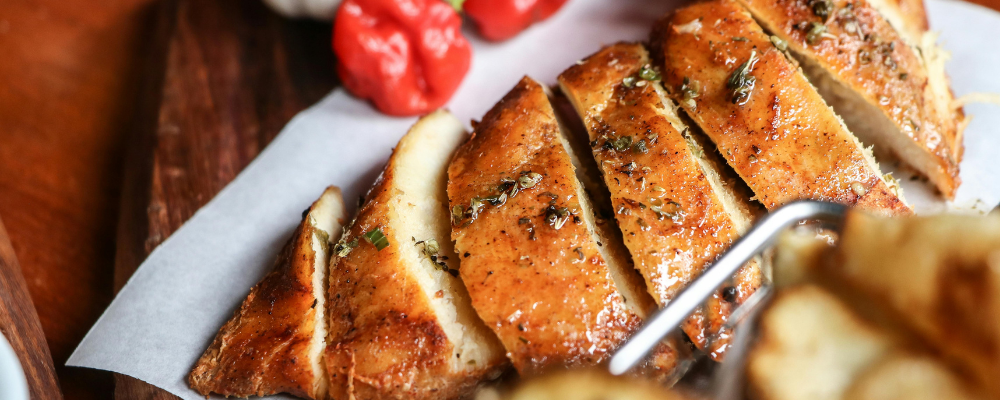
Why Buy a Whole Chicken?
— By Kate Yerxa, MS, RD, Extension Professor, University of Maine Cooperative Extension
When buying chicken, you probably have a specific cut in mind based on your recipe, personal preference, or current store sales. You might have noticed that whole chickens are often advertised at lower prices per pound than individual cuts like breasts or thighs. But are you saving money? And are there other benefits to buying a whole chicken?
The first benefit of buying a whole chicken is the potential cost savings. Did you know that the United States Department of Agriculture (USDA) monitors the retail cost of different foods each week? The USDA Weekly Retail Reports lists the average price of whole fryers or roasters and all other chicken cuts, whether conventionally raised, organic, skinless, or boneless, and costs are grouped by geographic region.
The week that this blog was written, the price for conventional, whole fryer chicken in the Northeast averaged $1.86 per pound. Comparatively, the price of conventional, boneless, skinless chicken breasts averaged $2.90 per pound, making the whole chicken a smarter financial purchase. The whole chicken is also a better buy when compared to a prepared whole rotisserie chicken (less than 2 pounds) which averages $4.36 per pound.
Another benefit of buying a whole chicken is that you can use one chicken in a variety of recipes. You could use the breasts for stir-fries or grilling, thighs for stews or roasting, and the carcass for making stock. Cuts from a whole chicken can be used in some of my favorite recipes including Chicken Cacciatore and Chicken Noodle Soup.
It can be intimidating to cut up a whole chicken. Never fear – UMaine Extension has developed the publication How to Cut Up a Whole Chicken and a video illustrating how to cut up a whole chicken. Cutting up a whole chicken does take time, and time is money, but it is a great skill to learn. Some individuals see the greater preparation time as a barrier to purchasing a whole chicken, and individual, pre-cut portions of chicken are more convenient. Another factor that may deter someone from purchasing whole chicken is that 100% of the chicken is not edible (bones), and you are spending money on food you are not going to eat. The USDA estimates that about 78% of a whole, cooked chicken is edible.
Purchasing a whole chicken can be cost-effective. While it requires more preparation time, the potential savings and the ability to utilize every part of the bird make it worthwhile. By learning how to cut up a whole chicken, you can expand your culinary skills and use the different cuts in new and tasty recipes.
Resources
- USDA Weekly Retail Reports
- USDA Table of Cooking Yields for Meat and Poultry
- Mainely Dish Chicken Cacciatore
- Mainely DIsh Chicken Noodle Soup
- University of Maine Cooperative Extension Bulletin #4068, How to Cut Up a Whole Chicken
- University of Maine Cooperative Extension video How to Cut Up a Whole Chicken
